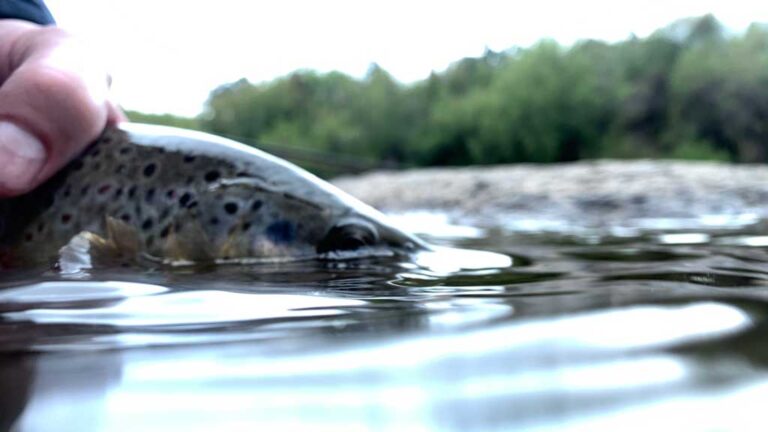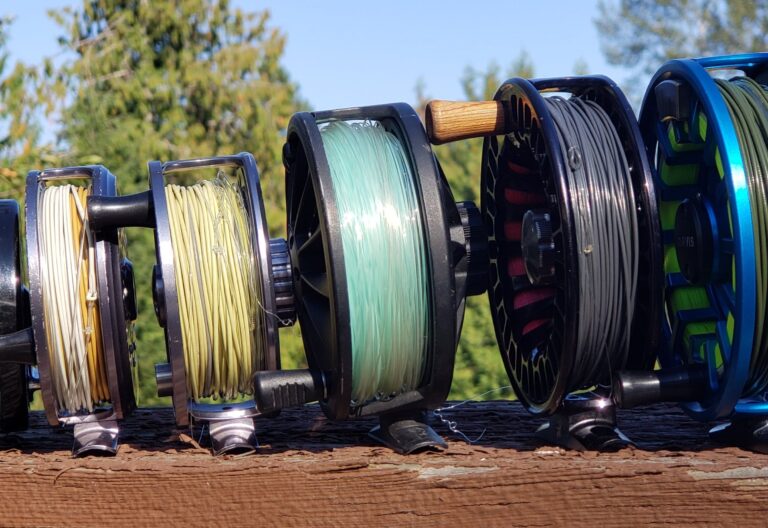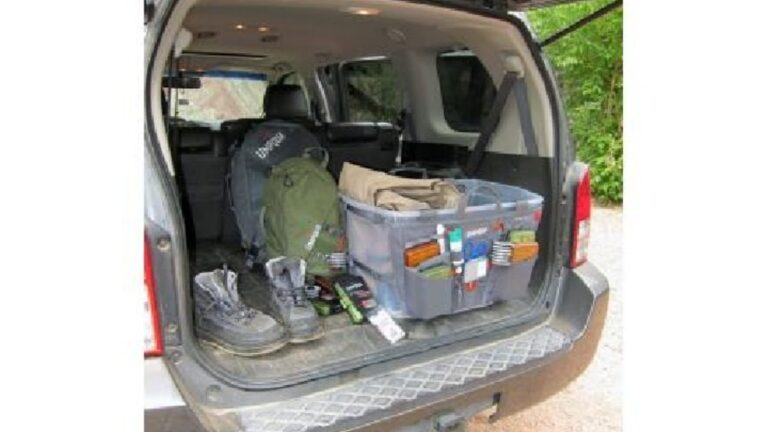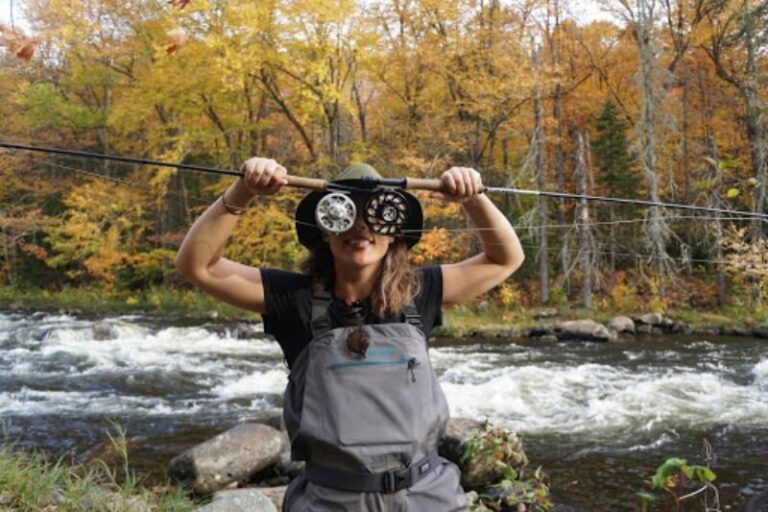Yes, you can bring fishing gear on a plane. Planning to bring your fishing gear on your next flight?
You’ll be happy to know that it is allowed. Many airlines permit passengers to bring fishing rods, reels, and other small fishing equipment as part of their checked or carry-on luggage. However, it’s important to ensure that your gear is properly packed and within the airline’s weight and size restrictions.
Additionally, some items like fishing knives or hooks may need to be placed in your checked luggage for safety purposes. By following the guidelines and regulations set by the airline, you can enjoy fishing at your destination without any hassle. Happy travels and tight lines!

Credit: www.jasminealley.com
Understanding The Rules And Regulations
Planning a fishing adventure and wondering about the rules and regulations around bringing your fishing gear on a plane? It’s essential to familiarize yourself with the specific guidelines before you head to the airport. In this section, we will delve into the different regulations surrounding fishing gear and the varying rules for carry-on and checked baggage.
Regulations Vary Based On The Type Of Fishing Gear
When it comes to fishing gear, it’s important to note that the rules and regulations may differ depending on the type of equipment you plan to bring. Here are some key points to keep in mind:
- Fishing rods: Most airlines allow fishing rods as part of your checked baggage, provided they are securely packed in a suitable case or tube. However, some airlines may have restrictions on size and weight, so it’s crucial to check with your airline beforehand.
- Fishing reels: Similarly, fishing reels are typically allowed in your checked baggage without any issues. However, it’s advisable to remove any lines or hooks from the reel to prevent potential entanglements.
- Hooks and lures: Small hooks and lures can usually be packed in either your carry-on or checked baggage. However, it’s a good practice to store these items in a separate container or tackle box to prevent injuries and ensure easy identification during security checks.
- Fishing knives: Depending on the airline and destination, fishing knives may need to be packed in your checked baggage due to security regulations. It’s crucial to check the specific requirements and guidelines of your airline and destination.
Different Rules For Carry-On And Checked Baggage
Understanding the distinction between carry-on and checked baggage rules is vital when it comes to bringing your fishing gear on a plane. Consider the following points:
- Carry-on baggage: Although fishing gear is usually allowed in carry-on luggage, there are restrictions on certain items. For instance, fishing hooks, knives, and any other sharp objects must be packed in your checked baggage. It’s best to review the airline’s guidelines to ensure compliance.
- Checked baggage: Most airlines permit fishing gear in checked baggage, but it’s essential to adhere to specific guidelines. The gear should be properly packed in a sturdy and secure case to prevent damage during handling. It’s also crucial to check the weight and size restrictions imposed by the airline.
- Security screening: In both carry-on and checked baggage, fishing gear is subject to security screening. To facilitate the process, it’s advisable to keep the gear easily accessible and properly organized. Avoid packing any restricted items, such as large knives or prohibited substances, to prevent delays and ensure a smooth screening experience.
Remember, it’s always a good idea to check the regulations and guidelines of your specific airline and destination before traveling. By understanding the rules surrounding fishing gear, you can ensure a hassle-free journey and make the most of your fishing adventure.
Carry-On Fishing Gear: What You Need To Know
When it comes to traveling with fishing gear, one question that often comes up is whether you can bring it on a plane. The good news is that you can bring fishing gear on a plane, but there are some guidelines and restrictions you need to be aware of.
In this section, we will discuss the types of fishing gear allowed in carry-on luggage, size and weight restrictions, and provide some tips for packing your fishing gear in carry-on bags.
Types Of Fishing Gear Allowed In Carry-On Luggage:
- Fishing rods and reels: Most airlines allow fishing rods and reels in your carry-on luggage, but there may be some restrictions on the size and length. It is recommended to check with the airline beforehand to ensure your fishing rod and reel are within the allowed dimensions.
- Hooks, lures, and flies: You can bring hooks, lures, and flies in your carry-on luggage. However, it is important to pack them in a way that prevents any accidents or injuries. It is recommended to carry them in a tackle box or a container that keeps them secure and organized.
- Fishing knives: Some airlines may allow small fishing knives in your carry-on luggage, but it is important to check the specific regulations of the airline you’re flying with. If you plan to bring a fishing knife, make sure it is properly wrapped and secured to avoid any injuries.
Size And Weight Restrictions:
- Each airline has its own size and weight restrictions for carry-on luggage. It is important to check the airline’s website or contact their customer service for the specific dimensions and weight limits before packing your fishing gear.
- Fishing rods can be quite long, so if you plan to bring one in your carry-on luggage, make sure it fits within the allowed length. Some airlines may require you to disassemble the rod and pack it in a protective case.
- Keep in mind that the weight of your carry-on bag should not exceed the airline’s limit. Take into consideration the weight of your fishing gear along with other personal items you plan to bring on board.
Tips For Packing Fishing Gear In Carry-On Bags:
- Disassemble your fishing rod: If the airline allows you to bring a fishing rod in your carry-on luggage, disassembling it will help ensure it fits within the size restrictions. Pack the rod in a protective case or tube to prevent any damage during transit.
- Organize your hooks, lures, and flies: Use a tackle box or small organizer to keep your hooks, lures, and flies organized and secure. This will prevent any accidental injuries and make it easier for security officers to inspect your gear if necessary.
- Wrap and secure fishing knives: If you plan to bring a fishing knife, wrap it securely in cloth or use a knife sheath to prevent any accidents. Make sure the knife is properly secured in your carry-on bag to avoid any injuries.
- Check airline regulations: Before traveling, check the airline’s regulations regarding fishing gear to ensure you are following their guidelines. Some airlines may have specific rules and restrictions, so it’s always best to be prepared.
You can bring fishing gear on a plane in your carry-on luggage, but it’s important to familiarize yourself with the specific regulations of the airline you’re flying with. By following the guidelines and packing your fishing gear properly, you can enjoy your fishing trip without any hassle or concerns.
Happy fishing!
Checked Baggage: Packing Fishing Gear
If you’re planning a fishing trip and wondering whether you can bring your fishing gear on a plane, the good news is that in most cases you can. However, there are a few factors to consider when packing your fishing gear in checked baggage.
Let’s delve into the key points to ensure your fishing equipment arrives safely and ready for your angling adventure.
What Fishing Gear Can Be Packed In Checked Bags
When it comes to packing fishing gear in your checked bags, here are some items that are generally allowed:
- Fishing rods: Collapsible or telescopic fishing rods can be packed and will usually fit within checked baggage requirements.
- Reels: Fishing reels can be packed securely in your checked bag.
- Hooks and lures: These can generally be packed, but ensure they are properly secured to prevent any injuries or damage to your other belongings.
Banned Items
While most fishing gear is allowed in checked baggage, there are a few items that are generally prohibited for safety reasons. These include:
- Fishing knives: Sharp blades and knives should not be packed in your checked bags. Instead, pack them in your carry-on luggage.
- Flammable or hazardous materials: Any flammable or hazardous items used for fishing, such as gas canisters or fish attractants, are strictly forbidden in checked bags.
Traveling With A Fishing Tackle Box
If you have a fishing tackle box, it’s important to take note of a few considerations:
- Empty the box: Ensure your tackle box is empty of any prohibited items or sharp objects, which should be packed separately in your carry-on luggage.
- Bag the box: To prevent any spillage or damage to your other belongings, place the tackle box inside a plastic bag or wrap it in a protective covering before packing it in your checked bag.
Packing Fragile Items
To protect your fragile fishing gear during transit, follow these tips:
- Use padding: Wrap your fishing rod and other delicate items like reels and tackle carefully in bubble wrap or clothing before placing them in your checked bag.
- Separate items: Keep fragile items separate from one another to avoid any potential damage caused by rubbing against each other.
- Secure loose parts: If any parts of your fishing gear are detachable, ensure they are securely fastened or pack them separately in a protective case.
Tips For Securing Fishing Gear In Checked Baggage
Here are some additional tips to ensure your fishing gear remains safe and intact:
- Use protective cases: Invest in a durable, hard-sided protective case for your fishing rods, reels, and other valuable gear.
- Label your gear: Attach clear identification tags or labels to your fishing gear, including your contact information, in case they get misplaced or lost during transit.
- Utilize available space: Make the most of the space in your checked bag by filling in any gaps with small fishing accessories, such as hooks, lines, or sinkers, securely stored in plastic containers.
- Consider insurance: If you have expensive or specialized fishing gear, it may be worth looking into travel insurance that covers your equipment against loss, damage, or theft.
By following these guidelines and taking necessary precautions, you can pack your fishing gear in your checked baggage with confidence, knowing that it will arrive at your destination ready for your fishing escapades. Remember to check with your airline for any specific rules or regulations regarding the transportation of fishing gear to avoid any hiccups along the way.
Happy fishing!
Additional Tips And Considerations
When it comes to bringing your fishing gear on a plane, it’s important to be aware of a few additional tips and considerations. By following these guidelines, you can ensure a smooth and hassle-free travel experience with your fishing equipment.
Checking Airline-Specific Rules And Restrictions
Before you pack your fishing gear, it’s crucial to check the rules and restrictions specific to the airline you’ll be traveling with. Different airlines may have varying guidelines regarding the size, weight, and types of fishing equipment allowed on board.
Make sure to:
- Visit the airline’s website or contact their customer service to familiarize yourself with their policies.
- Pay attention to any limitations on the number of fishing rods or tackle boxes you can bring.
- Take note of any additional fees or requirements for oversized or overweight fishing gear.
Properly Labeling Fishing Gear
To avoid any confusion or mishandling of your fishing equipment, it’s a good practice to properly label all your gear. This can help airline staff and security personnel identify your items more easily. Consider the following labeling tips:
- Use waterproof and durable labels to affix your contact information onto your rods, reels, and tackle boxes.
- Place an identification tag on the outside of your fishing gear bag or case, containing your name, phone number, and destination.
- Take clear and detailed pictures of your fishing gear, both for identification purposes and as a record for insurance claims, if necessary.
Insurance Coverage For Fishing Equipment
When you’re traveling with valuable fishing gear, it’s wise to consider insurance coverage. Accidents or damage can happen during travel, and having insurance can offer you peace of mind. Here’s what you should keep in mind:
- Review your existing insurance policies to determine if they cover your fishing equipment while in transit or during travel.
- Consider purchasing additional coverage specifically for your fishing gear through a reputable insurance provider.
- Document the value of your fishing equipment, including receipts, serial numbers, and photographs, to support any potential insurance claims.
International Travel Considerations
If you’re traveling internationally with your fishing gear, there are a few extra considerations to keep in mind:
- Research the customs regulations and requirements of your destination country, as they may have specific rules regarding the importation of fishing gear.
- Be aware of any restrictions on the types of fishing gear allowed in your destination country, such as prohibited bait or hooks.
- Familiarize yourself with any necessary permits or licenses required to fish in your destination country, both for traveling with your gear and for actual fishing activities.
Preparing For Airport Security Checks
Airport security checks can be a significant aspect of traveling with fishing gear. Being prepared can save you time and prevent any delays or issues. Consider the following tips:
- Remove any sharp objects, such as hooks or knives, from your carry-on luggage and place them in your checked baggage.
- Pack your fishing gear in a clear plastic bag or a dedicated fishing gear bag to make the screening process easier.
- Arrive at the airport with extra time to spare, as security checks for fishing equipment may take longer than usual.
By following these additional tips and considerations, you’ll be well-prepared to bring your fishing gear on a plane and enjoy your angling adventures without any unnecessary stress or complications. Remember to familiarize yourself with the airline-specific rules, properly label your gear, consider insurance coverage, take international travel considerations into account, and prepare for airport security checks.
Safe travels and happy fishing!
Conclusion
To wrap up, it is indeed possible to bring fishing gear on a plane, but it is crucial to follow the specific guidelines set by the airline and airport security. Packing items properly, ensuring they comply with size and weight limits, and placing any sharp objects in checked luggage are all essential tips to consider.
Remember to research the regulations beforehand and communicate with the airline if you have any doubts or questions. Being prepared and organized will make the process smoother, allowing you to enjoy your fishing adventure without any unnecessary stress or complications.
So, don’t let the thought of leaving your fishing gear behind deter you from planning your next trip. With the right knowledge and proper preparation, you can bring your fishing gear along and make memories that will last a lifetime.
Happy fishing and safe travels!





